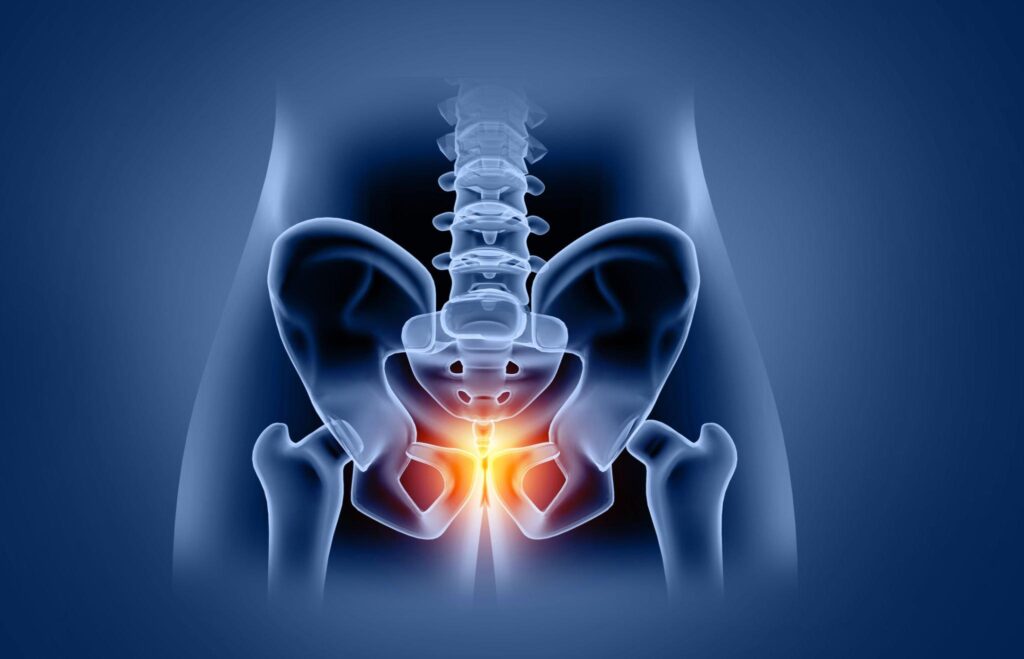Trauma Management
Pelvis Trauma
What is Pelvis Trauma?
Pelvic trauma refers to an injury to the pelvis, which is the bony structure that connects the lower limbs to the spine. Pelvic trauma can occur due to a variety of reasons, such as motor vehicle accidents, falls from heights, sports injuries, or violence.
Pelvic trauma can range from minor fractures to severe injuries that can be life-threatening. The pelvis is an important structure that protects several vital organs, such as the bladder, rectum, and reproductive organs. Therefore, severe pelvic trauma can cause damage to these organs and result in significant internal bleeding or other complications.
CAUSES FOR PELVIS TRAUMA
Pelvic trauma can occur due to various reasons, including:
Motor vehicle accidents: Motor vehicle accidents are one of the leading causes of pelvic trauma. The impact of the collision can cause severe pelvic injuries.
Falls from heights: Falls from heights can cause pelvic trauma, especially if the person falls onto a hard surface.
Sports injuries: Sports injuries that involve high impact, such as football, rugby, or gymnastics, can cause pelvic trauma.
Violence: Pelvic trauma can occur due to physical assault or other violent acts.
Crush injuries: Crush injuries can occur due to heavy machinery accidents or construction accidents.
Penetrating injuries: Pelvic trauma can also occur due to penetrating injuries, such as gunshot wounds or stab wounds.
Osteoporosis: Osteoporosis, which causes weakening of bones, can also increase the risk of pelvic fractures from even minor injuries or falls.
TYPES OF PELVIS TRAUMA
The following are some common types of pelvis trauma:
Pelvic Fractures: Pelvic fractures occur when one or more of the pelvic bones break. Fractures can be stable, in which the bones remain aligned, or unstable, where the bones become displaced.
Pelvic Dislocations: Pelvic dislocations occur when the bones in the pelvic joint become separated from each other.
Pelvic Sprains: Pelvic sprains are injuries to the ligaments that connect the bones in the pelvis. Sprains can cause pain and swelling in the affected area.
Acetabular Fractures: Acetabular fractures are fractures that occur in the socket of the hip joint. These types of fractures can cause significant pain and discomfort.
Coccyx Fractures: Coccyx fractures are fractures that occur in the tailbone. These types of fractures can be caused by falls or direct blows to the tailbone, and can result in pain and discomfort in the lower back and buttocks.
Avulsion Fractures: Avulsion fractures occur when a small piece of bone is pulled away from the rest of the bone due to the force of a ligament or tendon. Avulsion fractures can occur in the pelvis due to sports injuries or other high-impact activities.
- Open Pelvic Fractures: Open pelvic fractures occur when the skin and soft tissues over the fracture are also damaged. These types of fractures are severe and can result in significant bleeding and risk of infection.
TREATMENT FOR PELVIS TRAUMA
The following are some common treatments for pelvis trauma:
Pain Management: Pain management is usually the first step in treating pelvis trauma. Over-the-counter pain relievers or prescription pain medication may be prescribed to help manage pain.
Rest: Rest is crucial in allowing the body to heal. Patients with pelvis trauma may need to stay off their feet or use crutches for a certain period to allow the bones to heal.
Physical Therapy: Physical therapy may be recommended to help improve mobility and reduce pain. A physical therapist can help patients perform exercises that can help strengthen the muscles around the pelvis and improve range of motion.
Surgery: Surgery may be necessary for severe cases of pelvis trauma. Surgery may involve stabilizing the bones with plates and screws or repairing damaged organs.
Hospitalization: In severe cases, hospitalization may be necessary for observation and to provide necessary medical care.
PRECAUTION TO DONE FOR PELVIS TRAUMA
There are several preventative measures that can be taken to reduce the risk of pelvis trauma:
Wear Seat Belts: Wearing a seatbelt while driving or riding in a vehicle can significantly reduce the risk of pelvis trauma in case of an accident.
Use Protective Gear: When participating in high-impact sports or activities, using protective gear such as helmets, pads, and braces can help prevent injuries.
Follow Safety Protocols: Following safety protocols and guidelines in the workplace or during recreational activities can help prevent pelvis trauma.
Maintain Good Bone Health: Maintaining good bone health through a healthy diet, regular exercise, and getting adequate vitamin D and calcium can help reduce the risk of fractures.
Be Cautious: Being cautious and aware of surroundings can help prevent falls and other accidents that can cause pelvis trauma.
Seek Treatment for Osteoporosis: For individuals with osteoporosis, seeking treatment and following a treatment plan recommended by a healthcare professional can help reduce the risk of fractures.


FAQ
General Question
We help you clear up your doubts
Surgery is not always necessary for pelvis trauma. The treatment for pelvis trauma depends on the type and severity of the injury. Minor injuries may only require rest and pain management, while severe injuries may require surgery.
The long-term effects of pelvis trauma can vary depending on the type and severity of the injury. Some patients may experience chronic pain, limited mobility, or decreased quality of life.
Yes, pelvis trauma can lead to complications, such as internal bleeding, organ damage, or infection. It's important to seek medical attention immediately in case of any symptoms of pelvis trauma to prevent complications.

Testimonial
What Customer Says

Entrepreneur
Lorem ipsum dolor sit amet, consectetur adipiscing elit, sed do eiusmod tempor incididunt ut labore et dolore magna aliqua

Manager
Lorem ipsum dolor sit amet, consectetur adipiscing elit, sed do eiusmod tempor incididunt ut labore et dolore magna aliqua

HR Manager
Lorem ipsum dolor sit amet, consectetur adipiscing elit, sed do eiusmod tempor incididunt ut labore et dolore magna aliqua

HR Manager
Book Now
Make An Appointment
Opening Hours
- 08.00 AM - 20.00 PM
- 08.00 AM - 17.00 PM
- 09.00 AM - 17.00 PM
- 09.00 AM - 18.00 PM
Stay Connected with Orthopedics Kerala
This website uses cookies to provide you with the best browsing experience.


Lorem ipsum dolor sit amet, consectetur adipiscing elit, sed do eiusmod tempor incididunt ut labore et dolore magna aliqua